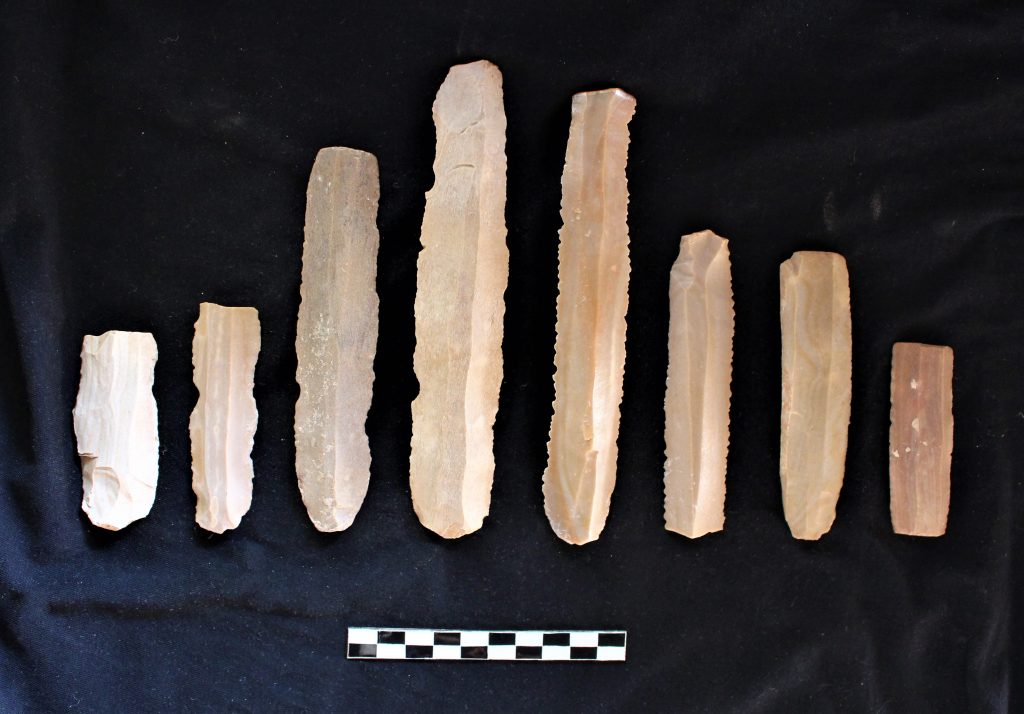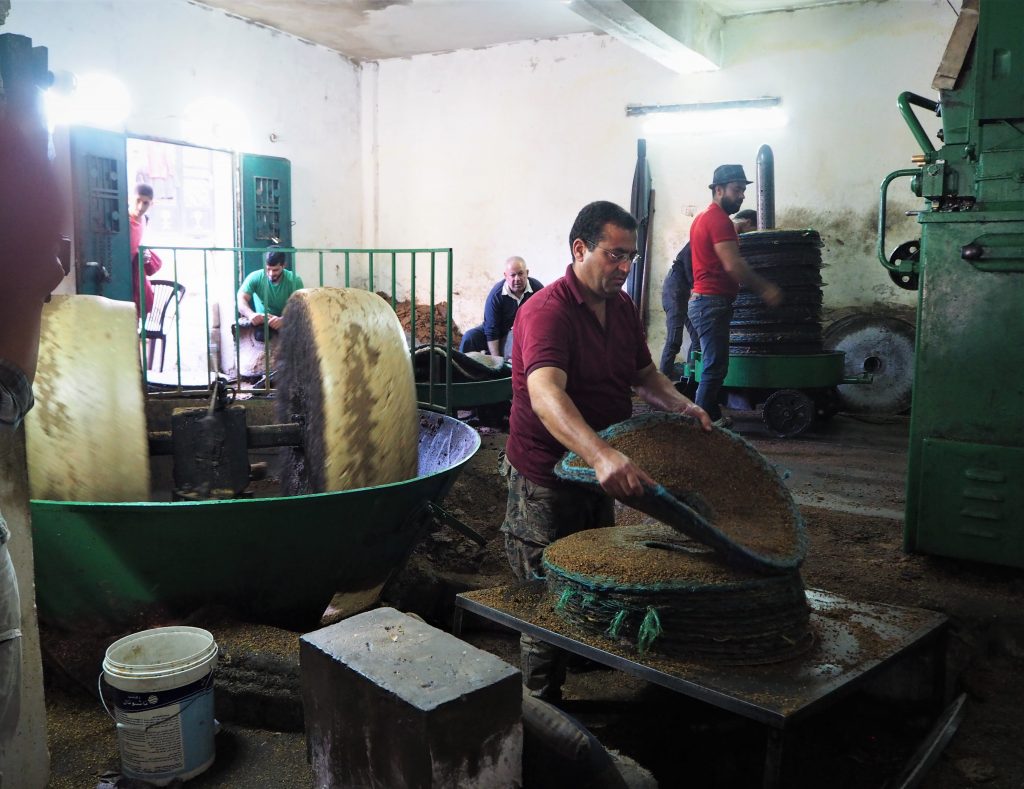Dr Jamie Fraser
The site of Khirbet Um al-Ghozlan (the “Ruins of the Mother of the Gazelles”) sits on a steep knoll overlooking the stunning Wadi Rayyan in north Jordan. Most archaeologists would classify the site as a hamlet or village, as it is only 0.4 ha in size. In this respect, Khirbet Ghozlan sits comfortably with our traditional understanding of the Early Bronze IV period (2600-2000 BCE), during which people abandoned large, fortified, mounded sites and dispersed into small, undefended villages.
However, Khirbet Ghozlan is remarkable for a monumental enclosure wall. Built partly as a double wall of massive, megalithic slabs, this enclosure controlled access to the Ghozlan knoll. Why defend such a tiny site?

Olive oil and the EB IV
The answer probably lies in the site’s upland location. Khirbet Ghozlan is one of several EB IV enclosure sites, all located on the well-drained slopes of the Jordan Rift Valley escarpment. As these hills are well-suited to horticultural production, I propose that small enclosure sites served as specialized processing centers for upland tree crops such as olive (Olea europaea), and were defended to protect seasonally-produced stockpiles of high-value liquid commodities such as oil. In other words, could Khirbet Ghozlan be a 4,500 year-old olive oil factory and storehouse?

Excavating Khirbet Ghozlan
To test this model, a team from the British Museum and University of Sydney undertook excavations at Khirbet Ghozlan in March 2017 and November 2019.
The results strongly support the olive hypothesis. Excavations uncovered a large architectural compound with several storage bins, and storage wares dominate the ceramic assemblage, including 26 partly-complete store jars and spouted decanting vats. Several long, notched Canaanean flint blades were possibly used as pruning saws, and four rock-cut olive presses were recorded nearby.


However, the most compelling data lies in the microscopic botanical remains. Using Scanning Electron Microscopy, Dr Caroline Cartwright (Senior Research Scientist, British Museum), identified crushed olive stones and carbonized olive wood in the organic remains obtained through soil flotation. These data suggest that olive fruit was pressed for oil and olive wood was burned as fuel, likely stockpiled as orchard prunings.
Furthermore, the absence of other plant species such as domestic cereal grains and legumes suggests that people did not live at Khirbet Ghozlan permanently; rather, they probably visited the site seasonally to harvest and maintain their orchards. The single phase of unmodified architecture is consistent with limited occupation, and the paucity of domestic debris such as cooking pots and hearths suggests non-domestic activity.
Modern and ancient olive mills
It was particularly thrilling to dig our trenches through this ancient olive factory at the same time as farmers were picking olives in the orchards that surround the site. Olives are harvested in October-November, after the first autumn rains wash away the summer dust. The fruit is pressed in local olive mills. Locked up for most of the year, these factories come alive each autumn, when they turn the olive harvest into oil for domestic consumption or local trade.

We were lucky to accompany the Jordanian Minister for Agriculture on a visit to a traditional olive mill in the village of Toubneh in north Jordan. Although oil extraction is now mechanized, the stages of washing, crushing and pressing are unchanged. The Toubneh mill was a powerful analogy for interpreting our discoveries at Khirbet Ghozlan – two seasonal olive factories separated by 4,500 years.
VIDEO 1: Olive pressing at the Toubeh olive mill. Video by Anthoulla Vassiliades. Video/Wendy John
Acknowledgements
The 2019 season was funded by the Palestine Exploration Fund, the Curtiss T. and Mary G. Brennan Foundation, the American Schools of Oriental Research and the Australian Academy of the Humanities. The 2017 season was funded by the Wainwright Fund and the Brennan Foundation. The SEM analysis of the archaeo-botanical remains was funded by the Mediterranean Archaeological Trust.


